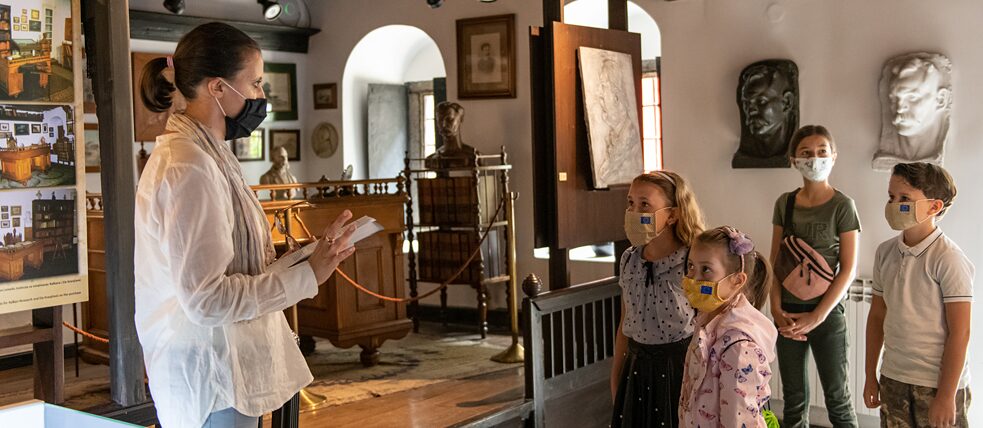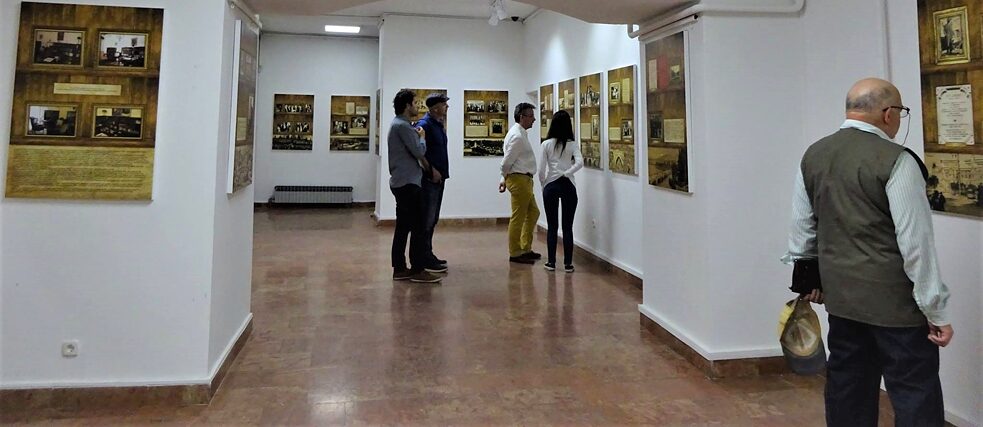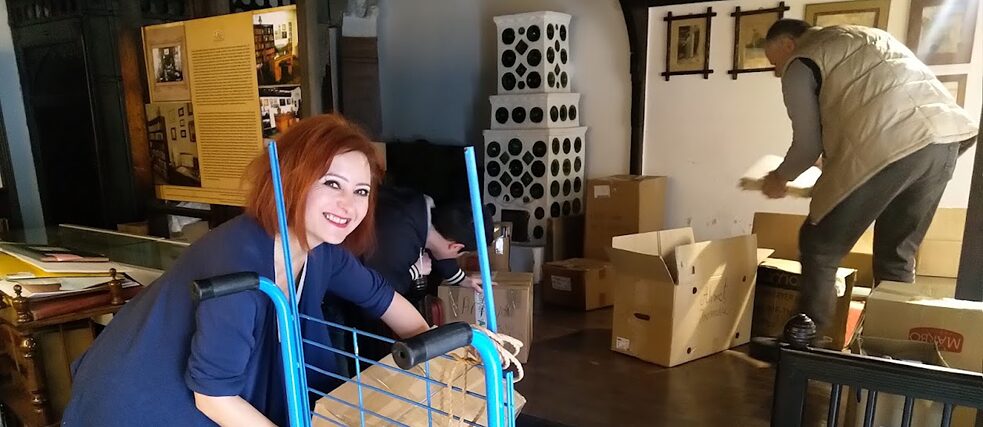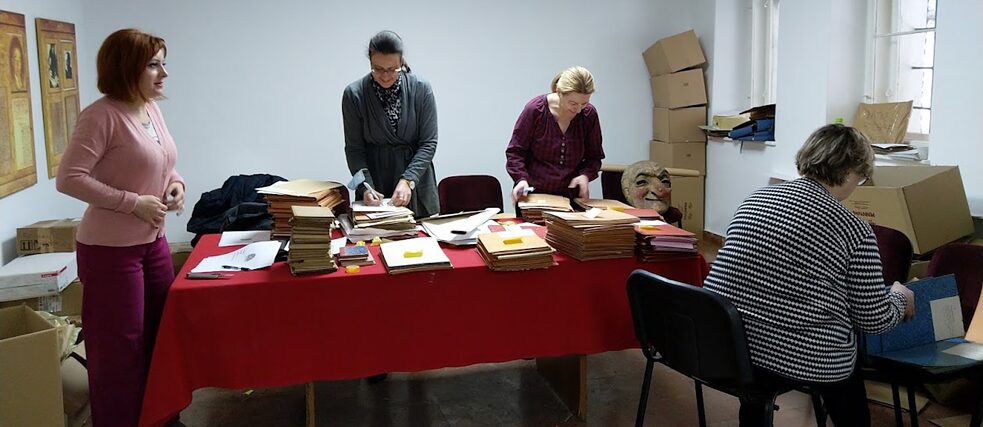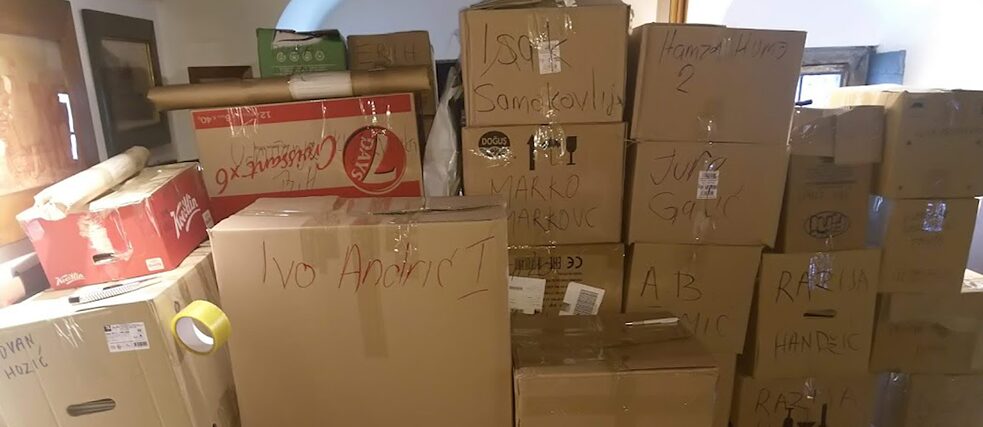Museum of Literature & Performing Arts, Sarajevo, Bosnia-Herzegovina
Place of remembrance for a polyphonic literature
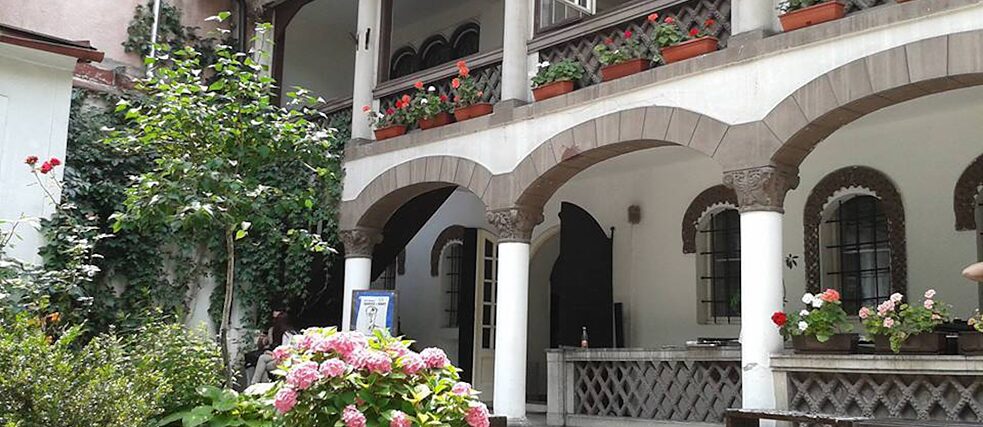
With its small, pretty courtyard and white-painted arcades, the Museum of Literature and Performing Arts is situated in a paradise-like location in the city of Sarajevo. The newly renovated archive houses a rich collection of writings from Bosnia's polyphonic literary tradition.
by Sejla Sehabovic
There is an old, 19th century house (monument of culture of the 1th category), at the center of Sarajevo. There is a small, neat garden in front of it. Archive photography from 1920s shows a woman, making a sculpture in the garden. The woman in question is Iva Despic, first Bosnian female sculptor with an academic degree. She was the last inhabitant of the house and the facade shows even today her original works.
From 1961 the house if a home for Museum of Literature and Performing Arts of Bosnia and Herzegovina. It was the year first (and only!) Yugoslav writer was awarded with Nobel prize for literature. Cultural workers of that Republic of Bosnia and Herzegovina used the fact that Ivo Andric was Bosnian himself, and also the fact that he has spent most of his career obsessively writing about Bosnia to lobby for the only museum of national literature in Yugoslavia to be established in Sarajevo.
They envisioned inclusive and multiethnic Bosnian History to be shown in the world of a written word. 1970-s saw this concept widened with the special collections dedicated to the history of theatre in Bosnia and Herzegovina.
Museum of Literature and Performing Arts of Bosnia and Herzegovina features Permanent Exhibition, Gallery and Garden - all used for public programs. The Museum also has an extensive Archive - renovated this year.
From 1995, due to political turmoil in Bosnia and Herzegovina, Bosnian ethno-national elites deny financial and legal support for this small but very important institution. This is one of the reasons that safekeeping of collections is a precarious work of utmost importance.
Museum collections must and will be digitalized. They are European heritage and belong to the world. Our archive is now (finally!) ready for that process.
